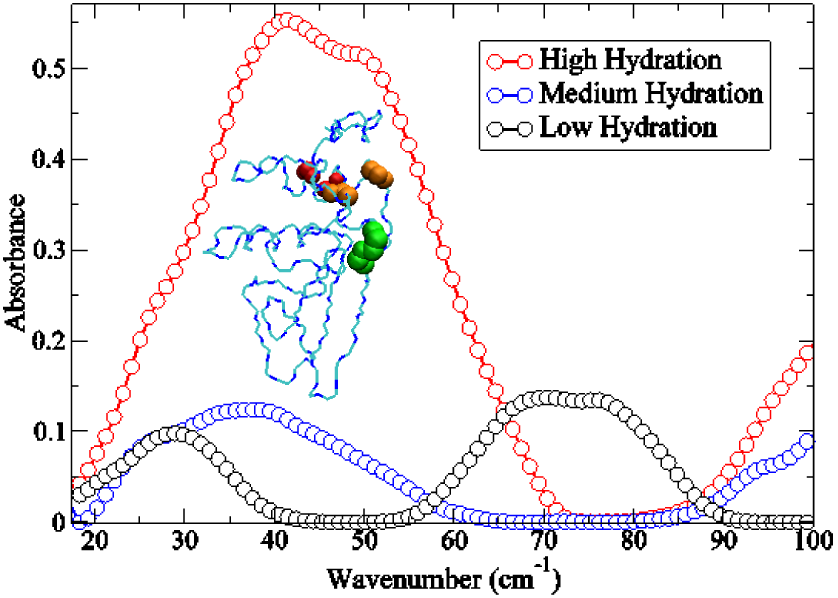| |
|
|
Kristina Woods' research in Biological Physics
Picosecond fluctuations in biomolecules
 The dynamical, molecular level associations essential for biological activity take place on a time scale ranging from femtoseconds to seconds. Recently, the results from a number of different numerical and computational studies have uncovered that biological macromolecules are capable of localizing, storing, and transporting energy in the presence of spatial disorder on a picosecond time scale. In light of these findings, is has been conjectured that picosecond time scale molecular associations provide a pathway for energy management and transport during the onset of a chemical or biochemical process. This efficient method for storage and energy transport in a biopolymer system during the early phase of a reaction has been proposed as an essential mechanism that ultimately determines the long term dynamical properties in many structurally dissimilar polymers. The dynamical, molecular level associations essential for biological activity take place on a time scale ranging from femtoseconds to seconds. Recently, the results from a number of different numerical and computational studies have uncovered that biological macromolecules are capable of localizing, storing, and transporting energy in the presence of spatial disorder on a picosecond time scale. In light of these findings, is has been conjectured that picosecond time scale molecular associations provide a pathway for energy management and transport during the onset of a chemical or biochemical process. This efficient method for storage and energy transport in a biopolymer system during the early phase of a reaction has been proposed as an essential mechanism that ultimately determines the long term dynamical properties in many structurally dissimilar polymers.
The role of picosecond fluctuations has been proposed as an important mechanism for determining the long term thermodynamical properties in relatively simple polymers like polyethylene. The same type of fluctuations have also been identified as a necessary means for manipulating energy barriers in more complex biopolymer systems like rhodopsin. To begin to address the relationship between localized fluctuations, energy storage, and energy transport in biopolymer systems during the onset of biological activity, my research interest in biological physics focuses on the experimental characterization of picosecond time scale fluctuations taking place in biological molecules with THz spectroscopy.
|
|
|
publications
- KN Woods, SA Lee, et al., J. Chem. Phys. 124 224706 (2006).
- KN Woods, H Wiedemann, J. Chem. Phys. 123 134506/07 (2005).
|

 The dynamical, molecular level associations essential for biological activity take place on a time scale ranging from femtoseconds to seconds. Recently, the results from a number of different numerical and computational studies have uncovered that biological macromolecules are capable of localizing, storing, and transporting energy in the presence of spatial disorder on a picosecond time scale. In light of these findings, is has been conjectured that picosecond time scale molecular associations provide a pathway for energy management and transport during the onset of a chemical or biochemical process. This efficient method for storage and energy transport in a biopolymer system during the early phase of a reaction has been proposed as an essential mechanism that ultimately determines the long term dynamical properties in many structurally dissimilar polymers.
The dynamical, molecular level associations essential for biological activity take place on a time scale ranging from femtoseconds to seconds. Recently, the results from a number of different numerical and computational studies have uncovered that biological macromolecules are capable of localizing, storing, and transporting energy in the presence of spatial disorder on a picosecond time scale. In light of these findings, is has been conjectured that picosecond time scale molecular associations provide a pathway for energy management and transport during the onset of a chemical or biochemical process. This efficient method for storage and energy transport in a biopolymer system during the early phase of a reaction has been proposed as an essential mechanism that ultimately determines the long term dynamical properties in many structurally dissimilar polymers.